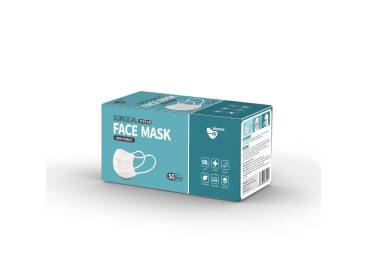The Difference Between Medical Masks and Ordinary Masks
The smog weather is getting worse and worse, street pedestrians will wear various types of dust masks to prevent smog.
The smog weather is getting worse and worse, street pedestrians will wear various types of dust masks to prevent smog. For example, 3 Considerations When Choosing the Diamond Saw Blades, medical masks, thick cotton masks, etc. Medical masks are usually high-efficiency electrostatic filter materials, while ordinary masks are printed with a very good appearance. So, what are the differences between medical masks and ordinary masks? Are their effects the same?
The characteristics of medical masks are light, comfortable, odorless, glass-free, non-irritating to the skin, waterproof, and after disinfection, it can kill or remove pathogenic microorganisms on the media to make it harmless; and it can Dust-proof, because of the low respiratory resistance, it is hygienic to wear, and absorbs aerosols, dust, smoke, mist, poisonous gases and poisonous vapors through the filter material, blocking them from being inhaled by people, effectively isolating pollution sources.

Surgical Masks
Ordinary masks are fiber masks. Its flow blocking principle is a mechanical barrier. Through this layer of mechanical barriers, large particles can be blocked, but particles with a diameter of less than 5 microns cannot be blocked, let alone PM2.5 particles, but Medical Masks and medical disposable masks can block particles larger than 4 microns in diameter, so ordinary masks must wear 16 layers to achieve the effect of medical masks.
In addition to higher hygiene requirements, medical protective masks should also have the function of effectively blocking liquid splashes. Due to the possibility of blood or infectious body fluid splashing during surgery, this kind of splashing has a certain pressure and is not a normal liquid infiltration. The ability of medical mask materials to block pressured liquids should be relatively high. Only in this way can it be Effectively protect medical staff.
Therefore, in the standard for medical protective masks, special testing methods are used to test the liquid barrier performance of such products. 3M dust masks used in general industrial environments do not need to have such special requirements. The testing standards also Naturally, there are no such regulations.
In addition, medical protective masks are not allowed to have an exhalation valve. This is because when medical protective masks are allowed to be used as surgical masks, if you wear a mask with an exhalation valve, the microorganisms carried in the exhalation will be directly discharged out of the mask, posing a threat to patients undergoing surgery. Many industrial protective masks have an exhalation valve design, but the price of dust masks with an exhalation valve is much higher than those without valves.
Further reading:
Medical masks are generally divided into cotton gauze masks, medical surgical masks, and N95 Masks. Their characteristics are:
Cotton gauze mask: It can prevent some viruses from attacking, but it has poor adhesion to the human face and low anti-virus efficiency.
Medical surgical masks: divided into three layers, the outer layer blocks water, the middle layer blocks more than 90% of 5μm particles in the air, and the inner layer absorbs moisture.
N95 medical protective mask: N95 is certified by the American Institute of Occupational Safety and Health. N refers to non-oily particles, and 95 refers to a filtration rate of 95% under the test conditions specified in the standard, and good adhesion.